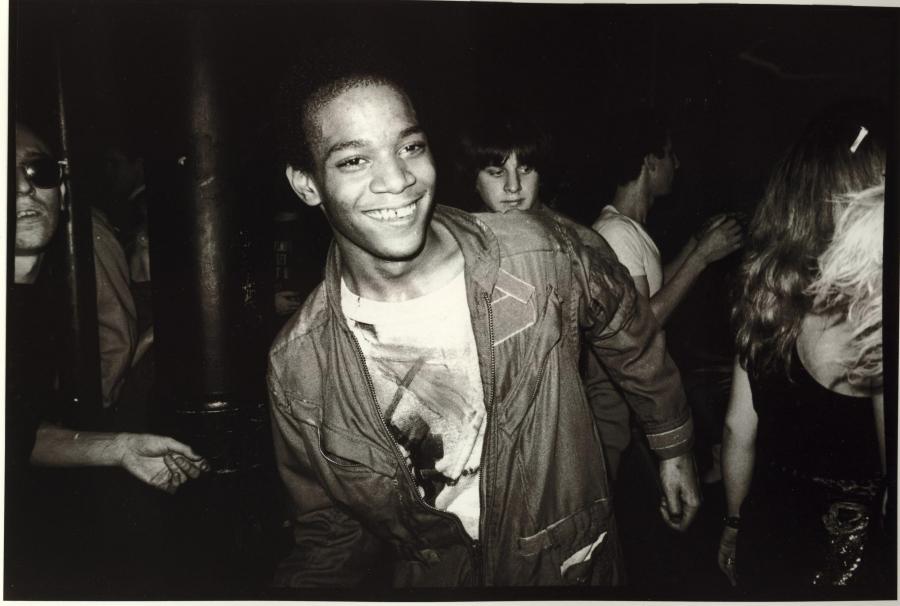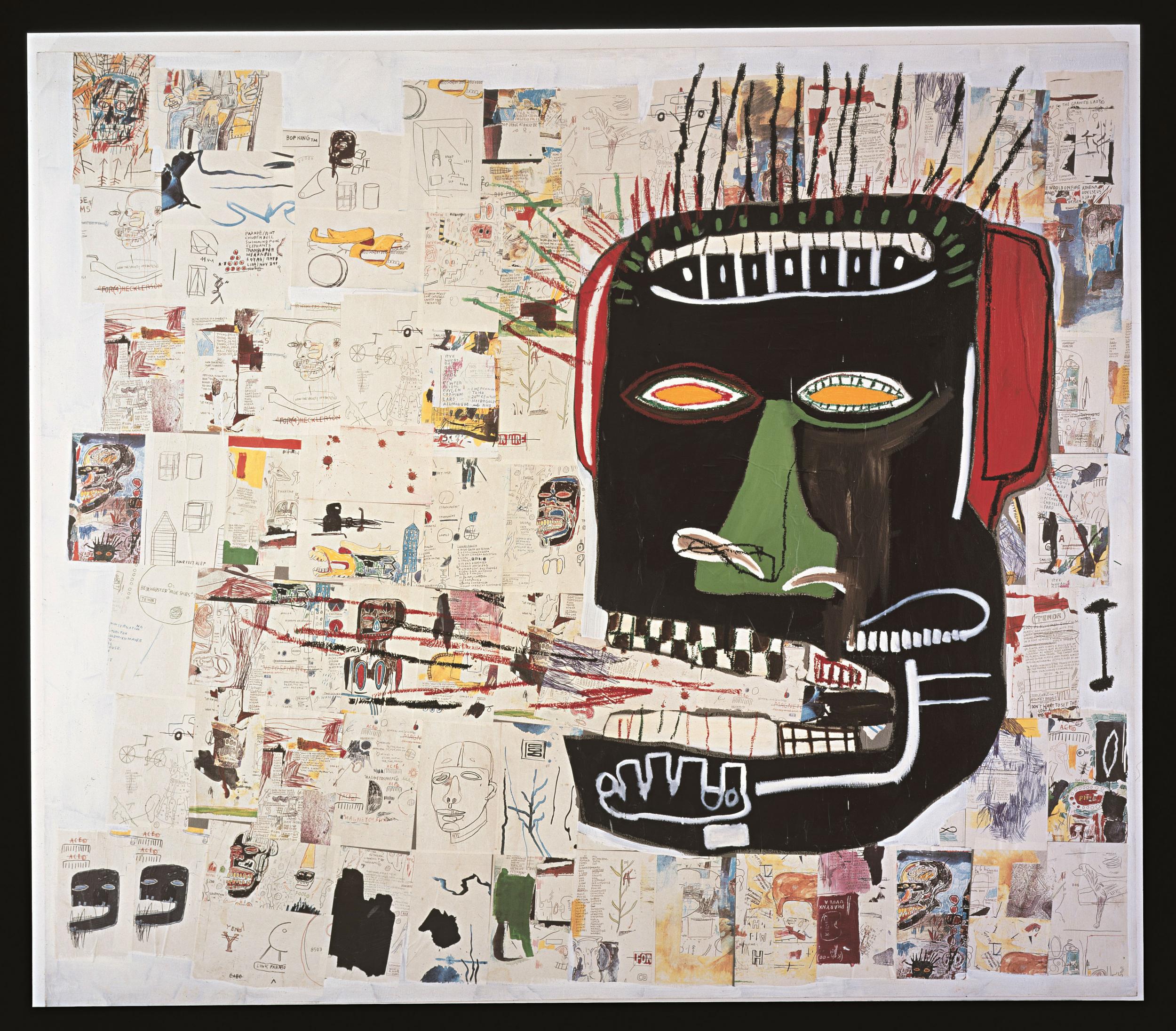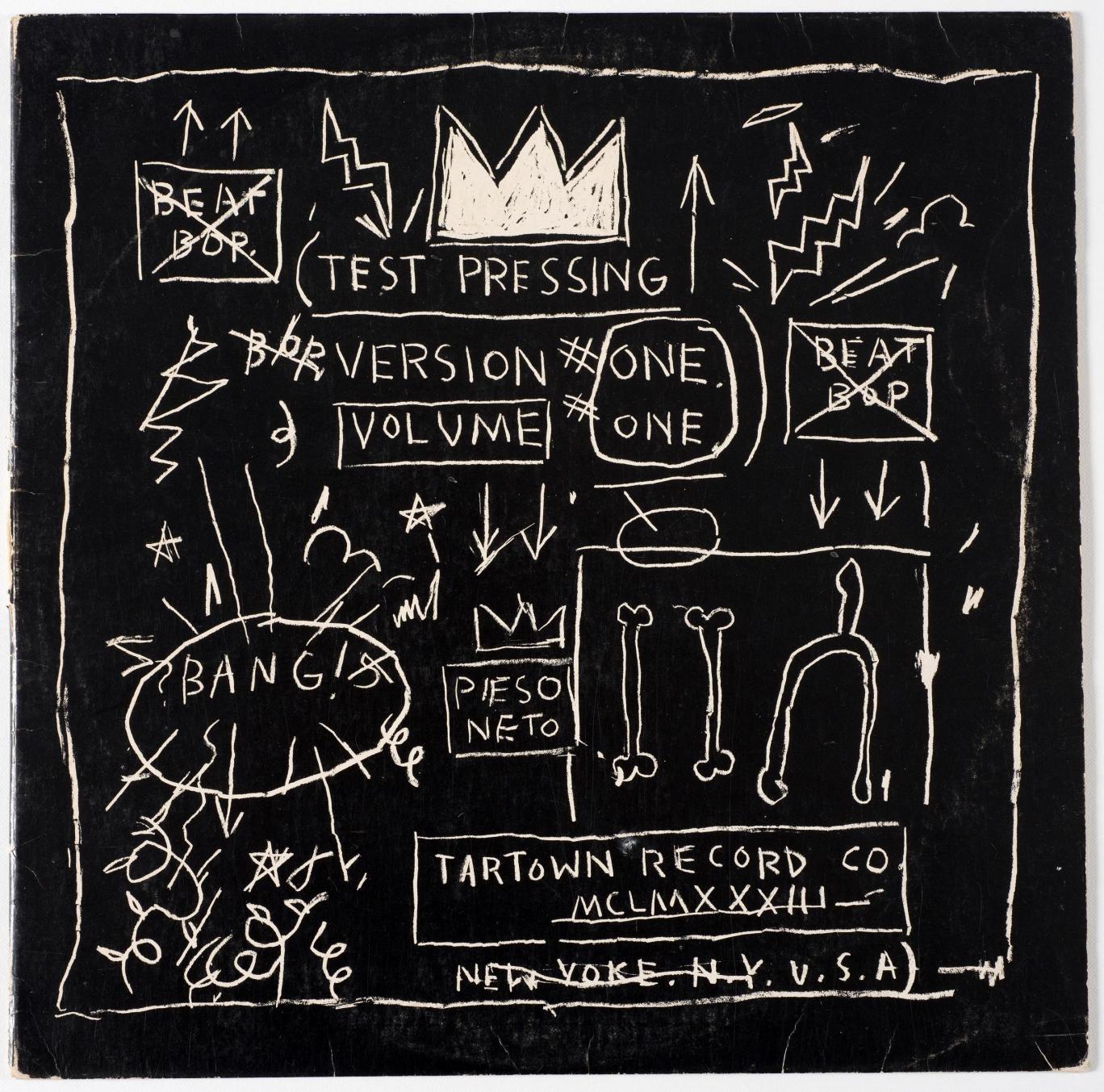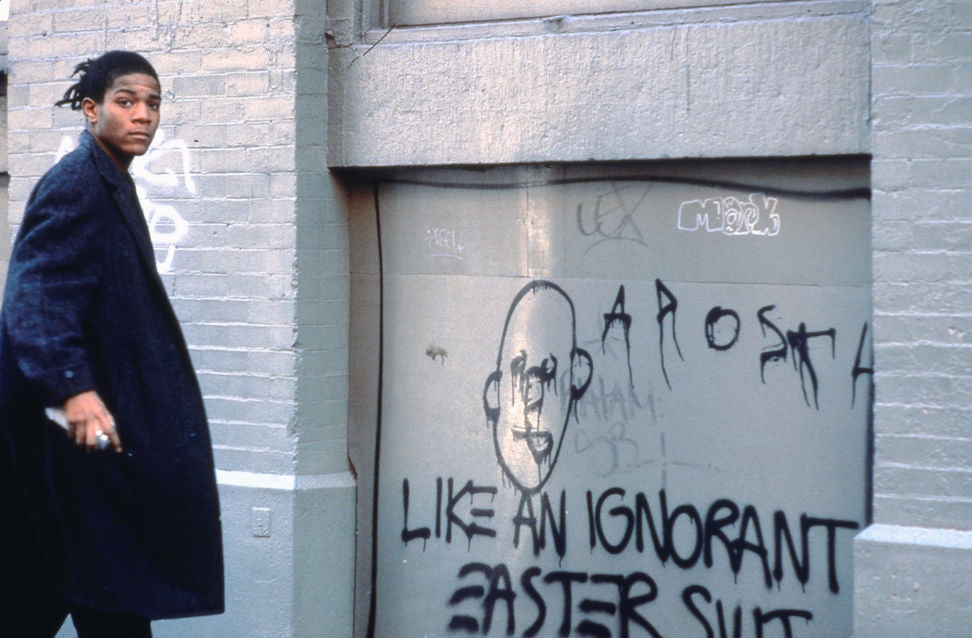Bowie, Bach and Bebop: How music powered Basquiat
He sold his first painting to Debbie Harry and titled works after bebop greats; his band was hailed by David Byrne and his art by David Bowie. For Basquiat, music was a crucial part of the canvas

Your support helps us to tell the story
From reproductive rights to climate change to Big Tech, The Independent is on the ground when the story is developing. Whether it's investigating the financials of Elon Musk's pro-Trump PAC or producing our latest documentary, 'The A Word', which shines a light on the American women fighting for reproductive rights, we know how important it is to parse out the facts from the messaging.
At such a critical moment in US history, we need reporters on the ground. Your donation allows us to keep sending journalists to speak to both sides of the story.
The Independent is trusted by Americans across the entire political spectrum. And unlike many other quality news outlets, we choose not to lock Americans out of our reporting and analysis with paywalls. We believe quality journalism should be available to everyone, paid for by those who can afford it.
Your support makes all the difference.In 1979, at 19, artist Jean-Michel Basquiat moved into an abandoned apartment on East 12th Street in Manhattan with his girlfriend at the time, Alexis Adler. The home, a sixth-floor walk-up, was rundown and sparsely furnished. Basquiat, broke and unable to afford canvases, painted with abandon on the walls and floor, even on Adler’s clothes.
The one item that remained undisturbed was Adler’s stereo, which had pride of place on a shelf scavenged from the street.
“The main thing for us was having big speakers and a blasting stereo. That was the only furniture I purchased myself,” says Adler, who still lives in the apartment. When Basquiat was around, she recalls, “music was playing all the time”.
On Thursday, the exhibition Basquiat: Boom for Real opened at the Barbican Centre in London. The show focuses on the artist’s relationship to music, text, film and television. But it is jazz – the musical style that made up the bulk of Basquiat’s huge record collection – that looms largest as a source of personal inspiration to him and as a subject matter.

The first major retrospective of his work in Britain, it is a kind of homecoming for Basquiat’s art: In 1984, the first institutional show of his work opened at the Fruitmarket Gallery in Edinburgh, and then travelled to the Institute of Contemporary Arts in London. In a satisfying closing of a circle, a large drawing that Basquiat made in London for the institute’s exhibition, but that ended up not being shown there, will go on display at the Barbican.
Basquiat’s musical tastes were eclectic: Curtis Mayfield, Donna Summer, Bach, Beethoven, David Byrne, Charlie Parker, Miles Davis, Aretha Franklin, Public Image Ltd’s Metal Box album. “And he had his favourite tracks that he would just play and play,” Adler says. “Bowie’s Low, definitely. And the second side of Heroes. The influence of music was huge.”
Basquiat eventually amassed a collection of more than 3,000 albums. It spanned blues, classical, soul, disco and even zydeco, a type of popular music from southern Louisiana. He also made his own music: as the leader of Gray, an experimental art noise quartet; as the producer of the single “Beat Bop”; and as a DJ at venues like the scene-setting Mudd Club in Tribeca.
Basquiat made frequent references in his work to the musicians he most admired. He paid homage to Parker, whose nickname was Bird, in paintings such as Bird on Money, Charles the First and CPRKR. Max Roach was a nod to the vision and style of the jazz drummer of that name.
And in King Zulu, a masterly painting inspired by the history of early jazz that occupies a prominent place at the Barbican, Basquiat summoned the memory of the trumpeters Bix Beiderbecke, Bunk Johnson and Howard McGhee. In the centre of the painting’s intense blue background, a face in minstrel makeup stares out, the image culled from a photograph of Louis Armstrong disguised as a Zulu king at Mardi Gras in New Orleans in 1949.

Basquiat was especially devoted to bebop, the restlessly inventive genre typified by the likes of Parker, Davis, Ornette Coleman and Thelonious Monk. Basquiat’s love of bebop fuelled his art, according to Eleanor Nairne, a curator of Boom for Real.
“Bebop was quite an intellectual movement,” she says. “It was also quite iconoclastic in wanting to break away from these older jazz harmonies. That idea of a kind of rupture, and of these musicians who were very young, vibrant powerful forces; there were lots of parallels he found with his own work and life.”
Basquiat, who died of a drug overdose at 27, attained dizzying heights during his short career. His first sale, the painting Cadillac Moon, was to Debbie Harry, the singer with of Blondie, in 1981. She paid $200.
Within months, his works were selling for tens of thousands of dollars. By his early twenties, he had made his first million. Yet Basquiat was discomforted by success. He was acutely conscious of his place as one of very few African Americans in a predominantly white art world, where he was regarded by some as little more than an interloper.
American art critic Hilton Kramer once described Basquiat as “a talentless hustler, street-smart but otherwise invincibly ignorant, who used his youth, his looks, his skin colour and his abundant sex appeal” to win fame.
According to Nairne, Basquiat was “hugely, uncomfortably, constantly aware of the racist ways he was constantly being pigeonholed”. And he found a telling parallel between his position and that of his jazz heroes. “These are musicians who are, in one sphere of their lives, incredibly celebrated,” Nairne says. “And in other aspects, on a daily basis and in the most banal terms, consistently reduced to the colour of their skins. They are literally having to use the back entrance of clubs. There’s no way you can divorce their music from their treatment in society. There was a lot of identification in there.”
Ultimately, Basquiat felt more at home in downtown New York. He had first come to prominence in the late Seventies as a graffiti artist with a “SAMO” tag, scrawling the streets of lower Manhattan with sardonic and elusively poetic maxims: “SAMO for the so-called avant-garde”; “Samo as an end 2 the neon fantasy called ‘life.’”
The downtown scene was a famously antic fusion of emergent art trends, street style, graffiti, trendsetting nightspots like the Mudd Club and Area, and upstart musical genres like New Wave and hip-hop. Its flourishing took place against a wider backdrop of MTV, sampling, scratching, semiotics and postmodernist theory; a time when the creation and dissemination of culture seemed an increasingly fluid, boundary-free process.
“It was all merging,” Adler says. For Basquiat, “it was a period of discovery.”
The multifaceted nature of the scene gave Basquiat licence to crisscross artistic forms on the way to developing his own style. He performed poetry onstage and produced the a mesmeric hip-hop “Beat Bop”, by graffiti artist Rammellzee and rapper K-Rob, that remains a genre classic.

In the band Gray, he played the synthesiser and the clarinet, and made Steve Reich-style sound experiments, looping snatches of audio on a reel-to-reel tape recorder. The group performed only sporadically but drew admirers including Byrne and hip-hop pioneer Fab 5 Freddy. An Interview Magazine review described them as “an easy listening bebop industrial sound effects lounge ensemble”.
Basquiat pulled out of Gray in 1981, when painting started to command his attention in a serious way. But music still remained a significant marker of his creative achievement.
David Bowie, writing after Basquiat’s death, hailed him as a kindred spirit whose sensibility belonged as much to rock as to art.
“His work relates to rock in ways that very few other visual artists get near,” the musician noted. “He seemed to digest the frenetic flow of passing image and experience, put them through some kind of internal reorganisation and dress the canvas with this resultant network of chance.”
Basquiat himself was less forthcoming. “I don’t know how to describe my work,” he once reflected. “It’s like asking Miles, ‘How does your horn sound?’”
© New York Times
Join our commenting forum
Join thought-provoking conversations, follow other Independent readers and see their replies
Comments